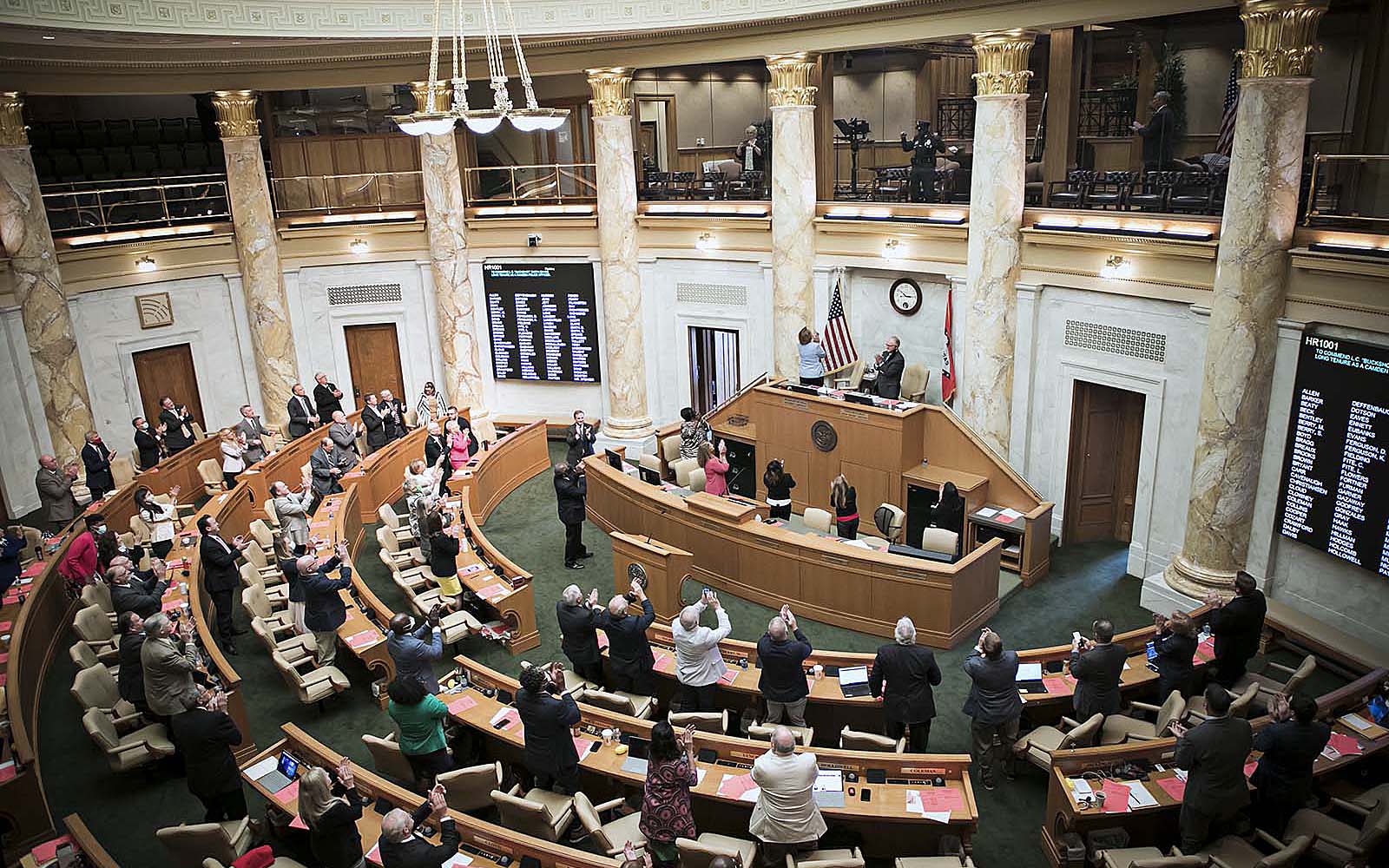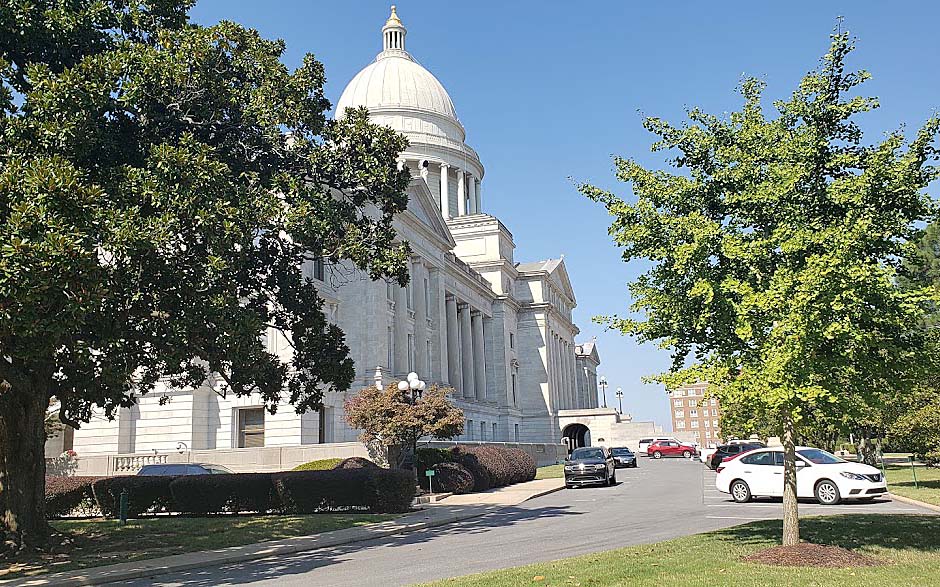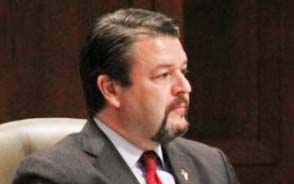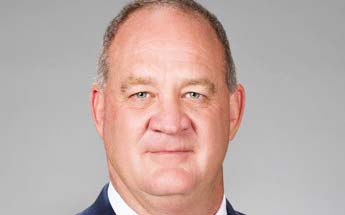Arkansas legislature prepares to redraw state’s four congressional districts on Sept. 29
September 27 - October 3, 2021
By Wesley Brown
The Arkansas General Assembly is expected to convene a special session later this week to redraw the state’s four congressional seats with new population data from the 2020 Census. They may also consider a proposal by Gov. Asa Hutchinson to cut the state’s income tax rate again.
Last week, the House and Senate State Agencies and Governmental Affairs Committees kicked off meetings to begin hearing proposals to redraw Arkansas congressional lines. Although the committees can take no action during these meetings, Senate President Pro Tempore Sen. Jimmy Hickey, R-Texarkana and Arkansas House Speaker Matthew Shepherd, R-El Dorado, told members they will likely be called back into an extended session of the 93rd General Assembly on Sept. 29.
“That date is subject to change, and we will continue to update you on any developments,” Shepherd said in a note to the 100 House members on Sept. 10.
The Arkansas legislature is reconvening for an extended session nearly five months after the 93rd Assembly adjourned for an extended recess on April 27. Hutchinson later called the 135-member assembly back to the State Capitol on Aug. 4 to revisit a new law that went into effect on July 28 that bans state and local government and school districts from enacting new mask mandates. Although the GOP supermajority ignored the popular Republican governor’s request to repeal the new law, it is currently blocked by a Pulaski County Circuit Court judge who deemed it unconstitutional.
Now, two months later, Hutchinson is negotiating with House and Senate leaders to add a proposal to further cut the state’s income tax at the end of the extended session. Under state law, it takes a two-thirds supermajority of the legislature to add additional legislation proposals to the special session agenda.
After taking office in 2015, Hutchinson fulfilled his top campaign promise by signing his so-called “middle-income” tax proposal of $102 million, touted by GOP officials as the largest income tax rate cut in state history. In the 2017 session, Hutchinson signed the second largest cut to the income tax rate in Arkansas history, a $50 million windfall aimed at lessening the tax burden for low-income Arkansans. The governor’s tax package then also eliminated the income tax on military retirement pay, known as the Retired Military Tax Cut.
In the 2019 session, Hutchinson signed legislation that reduced the top marginal tax rate from 6.9% to 5.9% in two phases. In the first year, which began Jan. 1, 2020, the state eliminated the traditional, six-rate upper-income bracket, and replaced it with a four-rate bracket of 2%, 4%, 5.9%, and 6.6%. The second year that began Jan. 1, 2021, reduced the top marginal tax rate from 6.6% to 5.9%.
Today, as the lawmakers consider what to do with a $1 billion surplus, Hutchinson is looking to continue his legacy as a fiscal conservative by lowering the state’s top tax rate to 5.5%.
“A special session is anticipated for income tax cuts, but the date is not set and agreement has not been reached on the details of the legislation,” Hutchinson spokesman Jay Grelen told The Daily Record.
The extended session to redraw the state’s congressional lines comes almost two months after the Census Bureau released its first round of population data necessary to begin the redistricting process after several months of delays due to the COVID-19 pandemic. The U.S. Constitution mandates that an apportionment of representatives among the states must be carried out every 10 years and delivered to the sitting president nine months after the count begins.
Earlier in February, James Whitehorne, chief of the Census Bureau’s redistricting and voting rights data office housed within the U.S. Department of Commerce, apologized that the critical redistricting totals had not been delivered to all 50 states as expected at the beginning of the year.
“If this were a typical decade, we would be on the verge of delivering the first round of redistricting data from the 2020 Census. Our original plan was to deliver the data in state groupings starting Feb. 18, 2021, and finishing by March 31, 2021,” Whitehorne said nearly a month after President Joe Biden took office. “However, COVID-19 delayed census operations significantly. Consistent with previous census, we are focusing first on our constitutional obligation to deliver the state population counts for apportionment to the President.
On April 26, U.S. Commerce Department Secretary Gina Raimondo finally delivered the decennial population count totals to President Biden that are used for apportioning the seats in the U.S. House of Representatives. That data showed the resident population of the U.S. on April 1 was 331,449,281, up 7.4% from a decade ago.
“Our work doesn’t stop here,” added acting Census Bureau Director Jarmin. “Now that the apportionment counts are delivered, we will begin the additional activities needed to create and deliver the redistricting data that were previously delayed due to COVID-19.”
Arkansas population count
After Arkansas and other states belatedly received the first round of apportionment data in August, a second round of the same easier-to-read population data was delivered to all 50 states last week as stated by Jarmin. That Sept. 16 data dump included an easy-to-use toolkit of DVDs and flash drives with integrated browsing software to use in redrawing their congressional and state legislative district boundaries.
Topics in both formats include 2020 Census population counts by race, Hispanic origin, voting age and housing unit data for counties, places, census tracts and blocks. Data users can also now access redistricting data with demographic information for cities and towns without downloading the original File Transfer Protocol or FTP.
Nationwide, all 50 states are beginning the process to redraw all 435 congressional seats but some stand to lose more than others. For example, Census Bureau apportionment data shows that Democratic-leaning California will lose one seat in Congress, while GOP strongholds like Florida and Texas will pick up one and two seats, respectively.
In Arkansas, the Republican Party’s domination of state politics is expected to continue with the Republican supermajority in the state House and Senate leading the debate on the redistricting process at the State Capitol. Today, Republicans hold a monopoly of all four congressional seats, every state elected office, and a supermajority in the state House and Senate.
Concerning the redrawing of congressional maps in Arkansas, Senate President Hickey and House Speaker Shepherd both sent out a schedule earlier this month to all 135 legislators in both chambers to plan for a special session to begin at the end of September.
In the first meeting on Wednesday (Sept. 20), the House and Senate State Agencies and Governmental Affairs Committees kicked off a series of joint meetings at the State capitol to consider any redistricting bills to redraw Arkansas’ four congressional districts. In 2010, the mammoth task to redraw the state and congressional district took well over a month to complete. This year, details and maps for House Bills 1959, 1960, 1961 gave the bicameral legislative panel the first chance to debate several proposals.
Under the first measure introduced by Rep. Nelda Speaks, R-Mountain Home, the 2nd Congressional District now held by U.S. House Rep. French, R-Little Rock, would be composed of Conway, Faulkner, Perry, Pulaski, Saline, and White counties. Spears’ new congressional map would remove Van Buren County into the Fourth District, now held by Congressman Bruce Westerman, R-Arkadelphia.
Other notable changes by the Mountain Home lawmaker would add Boone and Marion counties to the sprawling First District represented by Rep. Rick Crawford, R-Jonesboro, while removing Newton County. Spears plans would also add Lincoln, Newton, Pope counties to the mostly rural Fourth district with Van Buren County.
In the fast-growing Third District -- home to the University of Arkansas at Fayetteville and Fortune 500 companies Walmart, Tyson Food, J.B. Hunt -- Pope, Boone and Marion counties would move from the district held by Rep. Steve Womack, R-Bentonville, since 2011. That would leave the far Northwest Arkansas district with only five counties, including Benton, Washington, Sebastian Crawford and Carroll.
Under HB 1960, sponsored by Rep. Jack Ladyman, R-Jonesboro, would split White County with the 1st and 2nd districts with county seat Searcy becoming part of the more urban congressional seat held by Rep. Hill. Ladyman’s new map would also move Marion and Newton counties and the remaining rural communities in northern White County into the First District.
As noted, the Third District would lose Marion and Newton counties, as well as Pope and its county seat of Russellville. However, several precincts in Crawford and Sebastian counties in the Third District would be split into the Fourth District. Like Speaks’ map proposal, Ladyman’s plan would shift Pope County into the mostly rural 4th Congressional District.
The other congressional redistricting plan presented to the legislative committee on Monday was HB 1961, sponsored by Rep. David Whitaker, D-Fayetteville. Like Spears, Whitaker would remove Van Buren County from the Second District, home to the state’s largest city (Little Rock) and county (Pulaski). In the 1st and 4th districts, the Fayetteville Democrat proposes shifting the boundaries of at least 12 mostly rural counties into other congressional districts to make the state’s congressional map more contiguous.
In the 3rd District, Whitaker proposes moving the rural counties of Marion and Boone into the 1st District, while shifting Pope to the 4th District. That would leave the Northwest Arkansas congressional district with Benton, Washington, Sebastian, Carroll, Crawford and Madison counties. Those counties include five of Arkansas’ 10 largest cities in Fort Smith, Fayetteville, Springdale, Rogers and Bentonville.
As of Sept. 22, four other redistricting bills have been filed for consideration. House Bill 1962 by Rep. Reggie Murdock, D-Marianna, and Senate Bills 722 and 723, sponsored by Sen. Alan Clark, R-Lonsdale, are expected to come before the legislative committee on Sept. 23, The Daily Record’s weekly publication deadline. SB 724 by Sen. Greg Leding, D-Fayetteville, is not yet on the legislative calendar.
The joint House and Senate committee has also scheduled a redistricting for Monday (Sept. 27) to take up any additional bills that may be filed before the special session begins.
GOP-led Board of Apportionment
Meanwhile, Republicans will also have the advantage in using the new census data to redraw the state’s new legislative districts. Under state law, the state Board of Apportionment that oversees the state-level redistricting process has three members chosen by the sitting governor, the attorney general and the secretary of state.
In May, Gov. Hutchinson, Attorney General Leslie Rutledge and Secretary of State John Thurston - all Republicans – called their first meeting in anticipation of receiving 2020 U.S. Census redistricting data. Since then, former Supreme Court Justice Betty Dickey, appointed by Hutchinson, has held eight redistricting hearings across the state from July 29 to Aug. 24 to get input from Arkansas citizens on redrawing the state’s legislative districts.
After the 2010 Census, Arkansas 100 House representatives and 35 senators each served about 29,000 and 83,000 residents, respectively. The Board of Apportionment will have to figure out how to equally divide districts from the state’s resident population from the 2020 Census on April 1 of 3,011,524, an increase of 3.3% or 95,606 persons since 2010. Under the 2020 population totals, each of the 100 legislators in the Arkansas House would represent more than 30,000 people, while state senators would advocate for nearly 87,000 constituents.
In advance of the Board of Apportionment hearings, Dickey said her role is to make sure each Arkansas House and Senate seat meets various legal criteria, including each district being about the same size in population.
“The Board’s goal in redistricting area as follows; creating districts that substantially equal in population, geographically contiguous and compact; preserving cores of existing districts and communities of interest; recognizing geographic boundaries; and ensuring redistricting is not based on racial gerrymandering and political partisanship,” said Dickey, the first woman to serve as Arkansas’ chief justice.
A spokesman for the governor’s office said it is too early to announce a date when the Apportionment Board will release the state’s new legislative district map.
PHOTO CAPTIONS:
The 93rd Arkansas General Assembly is preparing to convene again at the State Capitol on Sept. 29 to redraw boundaries of the state’s four congressional districts.







